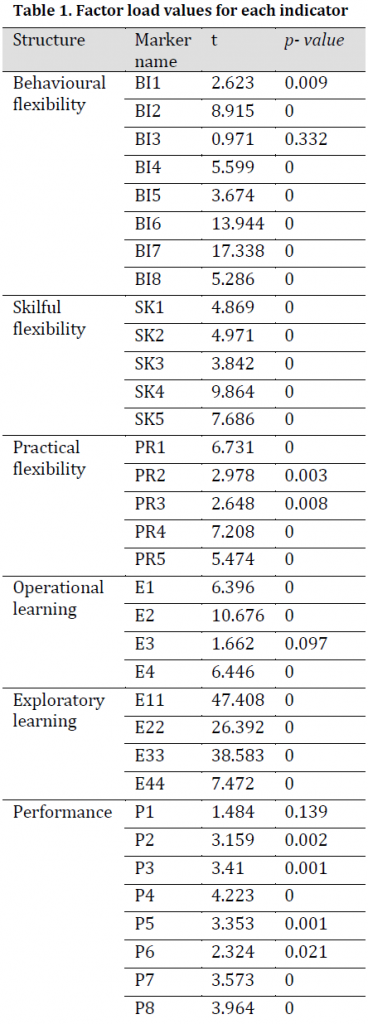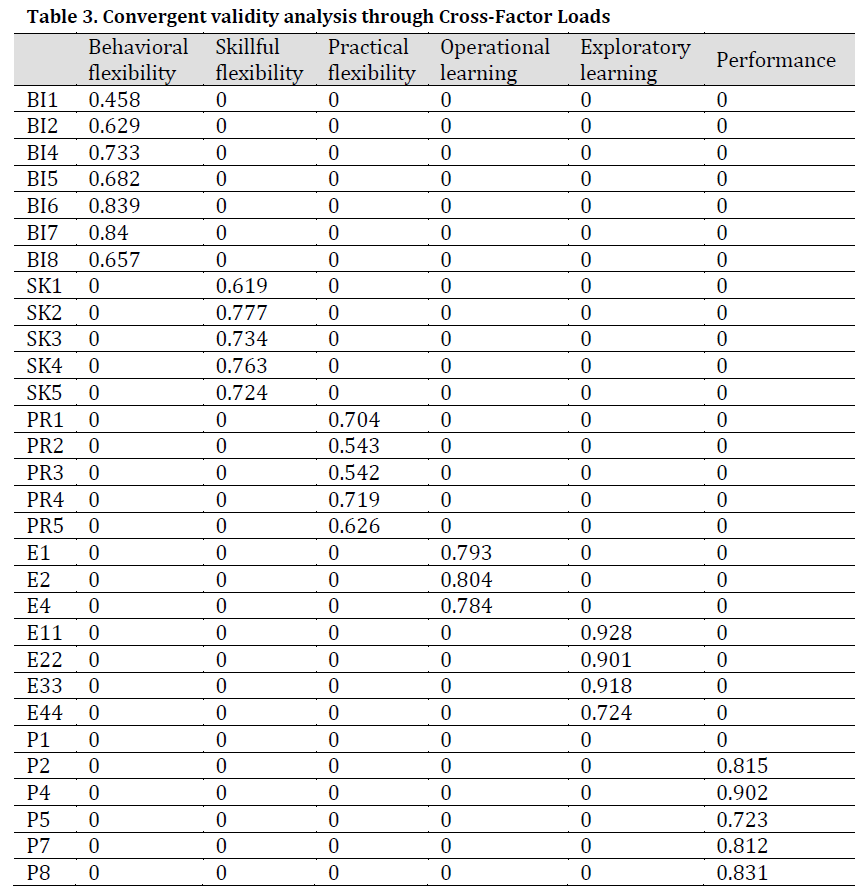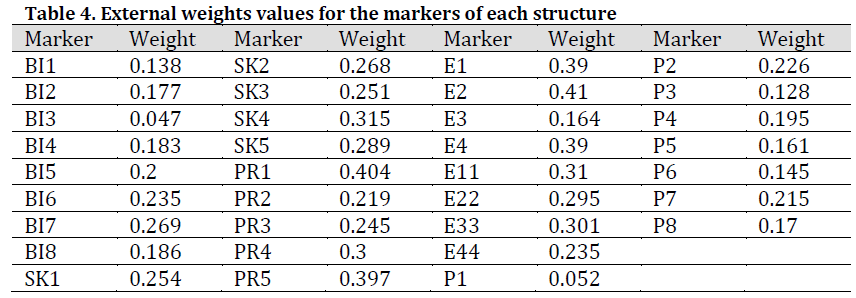

Document Type : Original Article
Author
Department of Management, Faculty of Management, Economics and Accounting, Payame Noor University, Iran
Abstract
Keywords
In recent years, human resource (HR) management studies have focused on two issues. The first focuses on organizational performance while the second concentrates on the flexibly in organization operations. Employee flexibility is important in any organization, but it is more important in universities where workloads are higher in some seasons. Studies showed that combining performance and flexibility is very useful in institutions and universities [1].
The term organizational ambidexterity was first used by Duncan, 1976 [2] and it is defined according to [3] as the ability of an organization to manage improvement both continuously and revolutionarily or so-called gradual and revolutionary changes simultaneously. In other words, it is an indicator of a firm’s efficiency in leading a successful business, taking into consideration the continuous changes in business environment. [4] suggested a type of ambidexterity in which mutual empowerment is achieved through the creation of a structural mechanism that enables the alternation between heuristic learning and operational learning, or by creating a temporal symmetry between the two types of learning, a combination of these two types of learning is achieved. It is very important for companies to achieve both of these aspects by exploring new opportunities through new knowledge, and technology and by exploiting existing knowledge and resources on the other hand [5].
[1][6] have emphasized that organizational ambidexterity as a whole is derived from specific actions and is established by individuals; it is steadily dependent on efforts to manage organization’s human resources. Organizations looking for skilled behavior should, therefore, focus on their HR functions so that individuals can devote their efforts to both exploitation and exploration activities [7][8].
Many studies concentrated on the strategic approaches for HR management in search of processes that help the organization adapt to a complex and dynamic environment [9]. From this point of view, human resource flexibility is conceived as a capacity through which an organization can more easily adapt to unforeseen environmental changes [10] in a way that Intangible assets (such as knowledge) and other tangible assets play a role in determining competitive advantage. Focusing on the concept of HR flexibility, previous literature illustrated the distinction between external or numerical flexibility and internal or practical flexibility [11] where numerical flexibility refers to the ability of the university to diversify the labor force values, while practical flexibility is related to the ability to perform a variety of heterogeneous tasks.
[12] believed that human resource flexibility consists of three different dimensions, namely skill flexibility, behavioral flexibility, and HR flexibility. Behavioral flexibility differs from skill flexibility in that employees may be motivated to perform flexibly but lack the knowledge or skills needed to perform it; therefore, it should be noted that flexibility in skills is one of the most prominent prerequisites for flexibility in behavior [13]. Skill flexibility refers to the number of potential uses of one’s knowledge and skills, and those who have acquired many skills that enable them to perform a wide range of tasks and have the ability to acquire new skills to carry out new tasks in the future, are considered flexible employees [12][14][15][16].
HR development programs integration requires the implementation of staff empowerment programs. Value and value creation are very important in organizations and according to [14] [17], HR is one of the value-creating resources in each organization. [18] suggested that intellectual capital is much more valuable than physical or financial assets, and argues that organization capital is the sum of human assets that creates a competitive edge. We define university performance as a function of teaching and learning quality and content in a way that contributes to student exploratory learning and ultimately to mutual (faculty and student) empowerment and positive feedback. Taking Payame Noor University of Isfahan, this research aims to investigate whether HR flexibility and performance at university are interconnected; and whether increasing HR flexibility enhances ambidexterity and improves performance in the university. Furthermore, this study will evaluate organizational ambidexterity as a mediating variable to link human resource flexibility and university performance.
Given the theoretical and research backgrounds, it is assumed that HR flexibility (including behavioral, skill and practical HR flexibility) has a positive impact on organizational ambidexterity to the extent that it facilitates the acquisition of skills and behaviors for employees to help them discover or exploit new strategic solutions. There are many reasons that explain why flexible employee behaviors provide valuable resources for the organization. Employees who can successfully handle different working conditions in their workplaces allow the firm to save on lack of adaptation costs [19]. Additionally, behavioral flexibility facilitates organization exit from day-to-day handling to the extent that it increases the firm’s chances of dealing with a wide range of different conditions [20][21]. Therefore, the first proposed hypothesis is as follows:
H1: University’s HR flexibility is positively related to organizational ambidexterity.
[20] examined the effect of skill, behavioral and practical flexibility of human resources on corporate performance. Their findings showed that HR flexibility had a direct relationship with sales returns, operating profit per employee, and sales per employee. Skills flexibility is also significantly associated with cost-effectiveness [20]. [22] reported a positive correlation between the flexibility of HR systems with innovation and the effectiveness of the performance of companies associated with market outcomes. [23] examined the relationship between task flexibility and effective teamwork, and showed that HR flexibility had a significant effect on group process. [24] results showed that with the improvement of corporate performance, the use of temporary and financial flexibility patterns increased; however, there was no relationship between corporate performance and numerical flexibility patterns and tasks. [25] illustrated that the use of task flexibility is usually associated with improved performance. Furthermore, employers witnessed an improvement in operational tasks and customer service with reduced staff turnover and a reputation expansion in the local labor market. On the other hand, increased job satisfaction and, in some cases, increased reward and job security were introduced to the employees. In another study, [14] examined the relationship between human resource flexibility and performance in hospitality industry and showed that ambidexterity as a variable affects the relationship between HR flexibility and performance.
Empirical studies have shown that employee resilience influences business outcomes [24][26][27][28]. Extensive knowledge-based employees confer competitive advantages to the organization because they provide a greater ability to develop efficient tools for fulfilling different work requirements [29][30]. Some studies assume that greater flexibility enhances employees’ satisfaction and motivation and thus their usefulness [7][28][31][32]. Therefore, the second proposed hypothesis is presented as follows:
H2: University’s HR flexibility has a positive relationship with performance.
Organizational ambidexterity means that a university has achieved both innovative and exploratory learning. This ambidexterity can be developed through the acceptance of a variety of flexibility modes [33]. This can be effective in promoting the performance of the university and helping it achieve its goals. Although some researchers have shown that organizational ambidexterity has a positive effect on performance [4][34][35]; other researchers have identified the possibility of this relationship. [36][37], and there are even studies that have found negative relationships [38][39], or studies that have found an inversed relationship (∩) between multidimensionality and performance [40][41]. This study attempts to investigate the positive relationship of multidimensionality to organizational outcomes. Therefore, the following hypothesis is proposed:
H3: University’s organizational ambidexterity has a positive relationship with performance.
HR flexibility may be found in employing innovative solutions within the company because such flexibility requires employees to respond better to emerging incentives. In addition, when employees improve their knowledge appropriately, their performance fluctuations are reduced and their productivity increases [42][43]. Similarly, flexibility encourages members of the organization to take action and build new ideas to reduce costs and develop new innovations [31][43]. Some empirical researches provided pieces of evidence of the flexible employees’ impact on job performance [44][45], job satisfaction [45][46], usefulness, customer service, and commitment levels within the organization [15][28]. Therefore, to examine the issue of organizational ambidexterity as a mediating variable between HR flexibility and performance, the proposed hypothesis is presented as follows:
H4: University’s HR flexibility is linked to performance through organizational ambidexterity.
The conceptual model of research as suggested by [14] can be seen in (Fig. 1). As universities provide services of an intangible nature, therefore, considering the three dimensions of behavioral, skill, and practical flexibility makes measuring the flexibility of HR at the university more accurate and efficient. Organizational ambidexterity, also known as exploratory learning and operational learning, is shown as a dependent variable and on the other, as a moderating variable that affects HR flexibility relationship with performance.

Figure 1. Conceptual model of the research as proposed by [14]
The data and information related to testing the hypotheses of this study were collected through a questionnaire set in the field of HR management. This questionnaire is derived from a study by [14] who conducted similar research in the hospitality industry in Spain (Supplementary Material 1). The questionnaire is based on the Likert design, which consists of five options ranging from very low to very high, equivalent to completely irrelevant to completely relevant.
The studied population consisted of all the staff and faculty members of Isfahan Payame Noor University Centers / Units. Payame Noor University in Isfahan province consists of 17 centers and 29 units with 970 staff and faculty members as of the year 2017. Questionnaires were sent electronically to staff, faculty members and deans of Isfahan Payame Noor University; and 39 responses were received. Respondents to the questionnaire were 18 female (46%) and 21 male (54%), 22 of them were staff members (53%) and 17 faculty members (47%). All the participants agreed to answer the questionnaire under the condition of a full understanding of the questions variables. Although sample size represents only 4% out of the studied population, the sufficient understanding for research variable increased the validity of the questionnaire as t-test for nonresponse bias for age, sex, position, and education level was insignificant which referred to the low probability of nonresponse bias.
Confirmatory factor analysis (CFA) was implemented to validate the accuracy of the used structures (Table 1). As E3, BI3, P1, P3, and P6 variables had non-significant t values, they were excluded from calculations [47][48]. Therefore, the validity of the constructs to evaluate the accuracy and significance of the model markers showed that the remaining markers are of sufficient accuracy and importance to measure the studied dimensions.

In the structural equation approach, diagnostic validity is also investigated. Diagnostic validity means that each marker measures only its own structure and its composition to reach a certainty that all structures are appropriately separated. To evaluate diagnostic validity, the average variance extracted (AVE) of the studied structures was used. The results showed that all the studied variables had AVE values of more or approximately 0.4 (Table 2) which referred to variables validity according to [49]. Cronbach’s alpha index and composite reliability index were used to assess reliability. All variables had Cronbach’s alpha and composite reliability coefficient values higher than 0.6 (Table 2) which indicated an acceptable level of reliability and understanding among the responders [50] and confirmed the ability of questions to properly explain their dimensions [51].

Table 2. Average variance extracted (AVE) values and reliability
Convergent validity analysis results illustrated that all the remaining markers measure precisely one factor with significant R2 values of Pearson’s correlation with their constructs compared to other constructs (Table 3) which indicated that these markers measure exactly the targeted concept [52][53]

To calculate the index values in the structural equation model, the outer weights were determined for the survey scale, which increased its ability to explain the last exterior or dependent variable. Outer weights markers values for each structure are shown in (Table 4).

Although there are not many accepted criteria for evaluating organizational ambidexterity, some research work may be found in the literature that helps to establish a specific measurement criterion for this variable. In this study, we utilize the exploitation and exploration scores presented by [54][55][56] and adapt those questionnaire-derived scores to the studied population. We consider these two scores to be orthogonal variables [4][55]. Therefore, in this study, ambidexterity emerged as a latent variable that is measured by exploratory learning and operational learning and encompasses the covariance of both types of learning.
Numerous studies have proven that perceptual measurement is to some extent a valid picture of organizational performance [57]. This study also used perceptual metrics to quantify organizational performance based on the work of [58][59] who quantified overall performance metrics (market share growth, reputation, company market image, and sales growth) and performance variables that are appropriate for universities. Another consideration was that university staff were asked to indicate the average perceived performance of each variable for their competitors over the past three years.
Cronbach’s alpha structural equation modeling was used for statistical analysis of questionnaire data. This method is used in researches that aim to test a specific model of relationship between variables. Analysis of covariance structures or structural equation modeling is one of the best methods for analyzing complex structures and its function is the analysis of various variables that show the simultaneous variation of variables in a theory-based structure [47]. This model consists of two general phases: confirmatory factor analysis and path analysis. There are many approaches to implementing the structural equation model. One of the most appropriate approaches in this model is the partial least squares (PLS) method introduced by [60]. Taking into consideration that studied variables are perceptual variables that are defined on a 5-point Likert scale, the partial least squares was used to test the hypotheses of this study as this method is extremely useful for small sample sizes and data abnormalities [61].
To test the hypotheses, sign, size, and significance of the path coefficient (beta) between each current variable and the dependent variable were examined. Results from t-student table (Table 5) showed that the only hypothesis confirmed at 99% confidence level was the first hypothesis (HR flexibility has a positive relationship with organizational ambidexterity) while the other three research hypotheses (H2, H3, and H4) were not confirmed. Additionally, flexibility components (behavioral, skillful, and practical flexibility) were found to have a significant linear effect on ambidexterity in university (Table 6).


Standardized root mean square residual (SRMR) index was used to validate empirical research model. The results suggested that the estimated model did not have a good fit as SRMR index registered values of more than 0.05 (Table 7) [62][63][64][65].

Our result of positive relationship between HR flexibility and organizational ambidexterity (first hypothesis) was previously reported in [7][8][14]. HR flexibility, defined through its three components (behavioral, skillful and practical flexibility), is often found to be effective and useful in universities. Furthermore, [7][8] stated that Organizational ambidexterity as a whole is derived from specific actions and is established by individuals. In other words, it is strongly dependent on the university’s efforts to manage its human resources; therefore, it can be stated that the flexibility of HR in Payame Noor University has led to the creation of organizational ambidexterity in this university. Flexible employee behavior helps to explore new opportunities, knowledge and technology, and on the other hand, provides better utilization for existing resources and knowledge. According to the statistical results of the research, behavioral flexibility at Payame Noor University had the greatest impact on its organizational ambidexterity.
There was no significant relationship between either HR flexibility or ambidexterity and performance, which means that the second and third hypotheses were not confirmed. The results obtained at Payame Noor University, as an educational organization, contradict those of similar surveys in different services and industries [14][20][22][66]. This observation might be interpreted due to the indirect involvement of the university’s HR in its performance.
Previously, [34][35] stated that bilateral organizational ambidexterity was positively related to performance. However, our results illustrated no significant relationship between organizational ambidexterity and performance in Isfahan Payame Noor University. This might be due to the focus on university operations and the lack of direct involvement of its staff in enhancing university performance.
According to the fourth hypothesis, HR flexibility is correlated with performance through organizational ambidexterity. In other words, organizational ambidexterity serves as a mediating variable for the relationship between HR flexibility and performance. The results of the hypotheses test showed that the staff could not create good organizational ambidexterity from both the dimensions of exploratory and operational learning, which contradicts [49][67][68][69]. Therefore, university performance clearly depends on ambidexterity provided by faculty members.
University staff is one of the key factors in attracting students and acquiring client satisfaction. Given that people in the community are seeking to continue their education at universities that respond to their educational needs, it is highly important to have flexible staff to meet these needs efficiently. Among the goals of Payame Noor University are to reduce restrictions and to provide opportunities for further education especially for those interested in deprived areas and cannot easily attain in the conventional education system. Furthermore, generalizing higher education and promoting the scientific and cultural level of society are also among the tasks of Payame Noor University. All of these aims cannot be feasible without flexibility in human resources in its three dimensions, for its direct positive relation with the organizational ambidexterity in this university.
Conflict of interest statement
The author had a position at the Payame Noor University at the time of conducting this experiment.
Funding statement
The author declared that no funding was received in relation to this manuscript.
Data availability statement
The author declared that all related data are included in the article. The used questionnaire was also deposited as supplementary material.